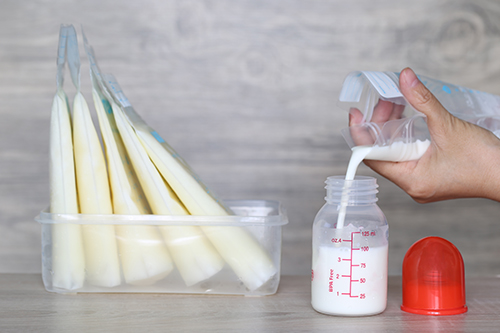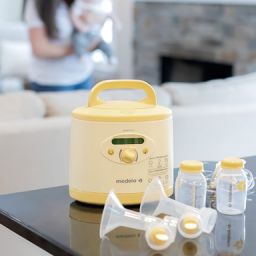One of the most common frustrations with breastfeeding is not knowing how much your baby is getting at each feeding. The good news is there are signs to watch out for.
1) Watch for your baby’s hunger cues and feed during the early signs of hunger.
Hunger cues can include any of the following: rooting (when your baby turns their head towards your chest looking for your nipple), lip smacking, opening their mouth, and putting their hands in their mouth. A late sign of hunger is crying. Try to catch your baby’s hunger cues early.
2) Feed your baby on demand or at least every 3 hours.
Watch and listen for signs from your baby that they are hungry and feed them when you first notice any. Some sleepy babies need to be woken up to feed during the early days even at night.
3) Monitor your baby’s diapers.
Good output means sufficient input. Average diapers by age:
Age Stools Wet diapers
4 days-6 weeks 4+ stools/day 6+ wet diapers/day
6 weeks- 12 months Stools vary by baby as long as there is good weight gain 4-5 wet diapers/day
4) Is your baby’s weight gain consistent?
This is typically monitored by your pediatrician or an IBCLC. Each pediatrician’s recommendations vary slightly for how much weight gain they expect from your baby. A general rule of thumb is that your baby should be back to birth weight by 10- 14 days and then continuously gaining.
5) Is your baby effectively removing milk from your breasts at each feeding?
There are signs you can look for including a good latch. With a good latch, you should be able to hear or see your baby swallow. You should also see wide jaw movements and milk in your baby’s mouth. If you are feeling any pain during the latch, take your baby off and latch them again as this is a sign of an inefficient latch.
Consult with an IBCLC to learn what your baby’s swallows sound like and to ensure your baby has a good latch. Do your breasts feel softer at the end of the feeding compared to at the beginning? This is another good sign that your baby is removing your milk. Your breasts will not always feel engorged before feeding so monitor what they feel like before and after the feedings.
6) Does your baby seem satisfied after feedings?
Your baby’s body should look completely relaxed when they have taken in enough milk. Your baby will no longer have a that tense appearance on their face with eyebrows furrowed and their hands will no longer be in a tight fist. This look is where the term “milk drunk” comes from and is different than a sleepy baby that falls asleep before the feeding is finished.
Many babies may want to soothe themselves by sucking even after a good feed. Try offering a clean finger, pacifier, or placing baby skin to skin against you. Know that cluster feeding (short/frequent feedings) can be normal especially during the newborn period and during growth spurts. If you and your baby are showing these signs be confident that your breastfeeding journey is off to a good start.
You are welcome to weigh your baby anytime during store hours at The Care Connection.
*ALWAYS check with an IBCLC or your pediatrician if there are any concerns about your baby’s weight gain









